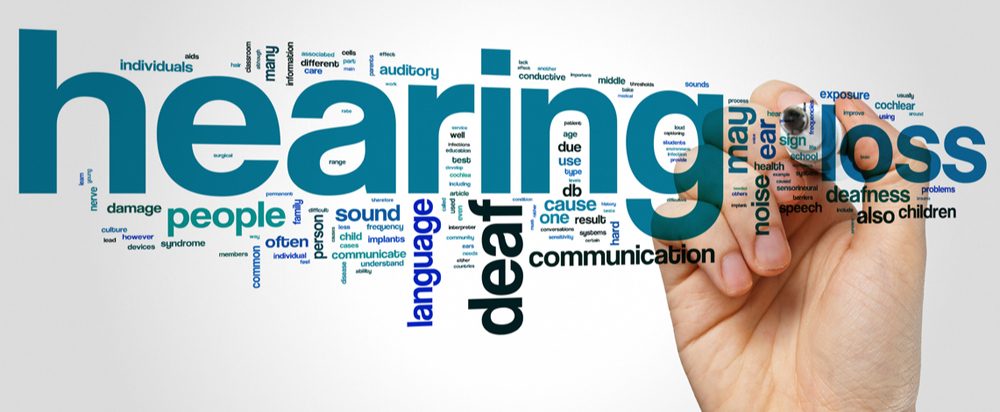Age-related hearing loss is the top communication problem for older adults, and conditions such as listening in a noisy environment or hearing high or low pitches can exacerbate it. The biannual Aging and Speech Communication Conference is an international and interdisciplinary gathering featuring top experts in the field coming together to discuss their research. In April, JSLHR published a special issue featuring select papers from the 7th Aging and Speech Communication Conference.
Erick Gallun, JSLHR’s editor-in-chief for hearing, said he was excited to feature the conference in a special issue. “You have different people all coming at the same issues from their own perspectives.” Gallun said that professionals such as physiologists who are interested in models of aging, audiologists, scientists looking at the aging brain and its relationship to hearing, and even scientists interested in the social implications of hearing loss could all collaborate on research in this field. Topics covered in this special issue are similarly diverse and include the older brain and the role that it may play in treatment, the effect of age when recognizing words in accented English, and the ability of older adults to perceive emotion in a speaker.
We hope you enjoy this special issue, and we would like to thank Special Issue Editor Dave Eddins for his work. You can read the entire issue here, or read individual articles below.
Explore the Issue
Ben-David, B. M., Gal -Rosenblum, S., van Lieshout, P. H. H. M., & Shakuf, V. (2019). Age-related differences in the perception of emotion in spoken language: The relative roles of prosody and semantics. Journal of Speech, Language, and Hearing Research, 62, 1188–1202. https://doi.org/10.1044/2018_JSLHR-H-ASCC7-18-0166
Colby, S., Shiller, D. M., Clayards, M., & Baum, S. (2019). Different responses to altered auditory feedback in younger and older adults reflect differences in lexical bias. Journal of Speech, Language, and Hearing Research, 62, 1144–1151. https://doi.org/10.1044/2018_JSLHR-H-ASCC7-18-0124
Dupuis, K., Reed, M., Bachmann, F., Lemke, U., & Pichora-Fuller, M. K. (2019). The circle of care for older adults with hearing loss and comorbidities: A case study of a geriatric audiology clinic. Journal of Speech, Language, and Hearing Research, 62, 1203–1220. https://doi.org/10.1044/2018_JSLHR-H-ASCC7-18-0140
Gaskins, C., Jaekel, B. N., Gordon-Salant, S., Goupell, M., & Anderson, S. (2019). Effects of aging on perceptual and electrophysiological responses to acoustic pulse trains as a function of rate. Journal of Speech, Language, and Hearing Research, 62, 1087–1098. https://doi.org/10.1044/2018_JSLHR-H-ASCC7-18-0133
Gordon-Salant, S., Yeni-Komshian, G. H., Bieber, R. E., Jara Ureta, D. A., Freund, M. S., & Fitzgibbons, P. J. (2019). Effects of listener age and native language experience on recognition of accented and unaccented English words. Journal of Speech, Language, and Hearing Research, 62, 1131–1143. https://doi.org/10.1044/2018_JSLHR-H-ASCC7-18-0122
Jesse, A., & Helfer, K. S. (2019). Lexical influences on errors in masked speech perception in younger, middle-aged, and older adults. Journal of Speech, Language, and Hearing Research, 62, 1152–1166. https://doi.org/10.1044/2018_JSLHR-H-ASCC7-18-0091
Pronk, M., Lissenberg-Witte, B. I., van der Aa, H. P. A., Comijs, H. C., Smits, C., Lemke, U., . . . Kramer, S. E. (2019). Longitudinal relationships between decline in speech-in-noise recognition ability and cognitive functioning: The Longitudinal Aging Study Amsterdam. Journal of Speech, Language, and Hearing Research, 62, 1167–1187. https://doi.org/10.1044/2018_JSLHR-H-ASCC7-18-0120
Roque, L., Gaskins, C., Gordon-Salant, S., Goupell, M. J., & Anderson, S. (2019). Age effects on neural representation and perception of silence duration cues in speech. Journal of Speech, Language, and Hearing Research, 62, 1099–1116. https://doi.org/10.1044/2018_JSLHR-H-ASCC7-18-0076
Rudner, M., Seeto, M., Keidser, G., Johnson, B., & Rönnberg, J. (2019). Poorer speech reception threshold in noise is associated with lower brain volume in auditory and cognitive processing regions. Journal of Speech, Language, and Hearing Research, 62, 1117–1130. https://doi.org/10.1044/2018_JSLHR-H-ASCC7-18-0142







